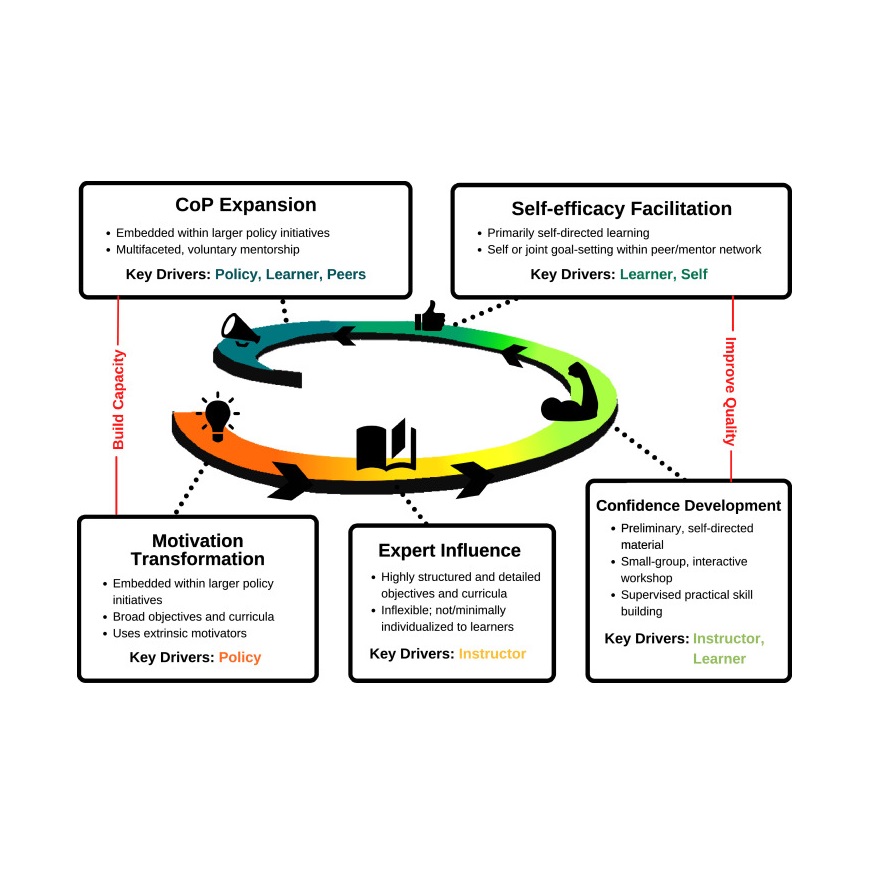

Citation
Grahanya Sachidanandan, Lauren E. Bechard, Kate Hodgson, Abhimanyu Sud,
Education as drug policy: A realist synthesis of continuing professional development for opioid agonist therapy.
Int J Drug Policy. 2022. 108: 103807. doi: 10.1016/j.drugpo.2022.103807. Epub 2022 Aug 2.
Abstract
Continuing professional development (CPD) for opioid agonist therapy (OAT) has been identified as a key health policy strategy to improve care for people living with opioid use disorder (OUD) and to address rising opioid-related harms. To design and deliver effective CPD programs, there is a need to clarify how they work within complex health system and policy contexts. This review synthesizes the literature on OAT CPD programs and educational theory to clarify which interventions work, for whom, and in what contexts.
A systematic review and realist synthesis of evaluations of CPD programs focused on OAT was conducted. This included record identification and screening, theory familiarization, data collection, analysis, expert consultation, and iterative context-intervention-mechanism-outcome (CIMO) configuration development.
Twenty-four reports comprising 21 evaluation studies from 5 countries for 3373 providers were reviewed. Through iterative testing of included studies with relevant theory, five CIMO configurations were developed. The programs were categorized by who drove the learning outcomes (i.e., system/policy, instructor, learner) and their spheres of influence (i.e., micro, meso, macro). There was a predominance of instructor-driven programs driving change at the micro level, with few policy-driven macro-influential programs, inconsistent with the promotion of CPD as a clear opioid crisis policy-level intervention.
OAT CPD is challenged by mismatches in program justifications, objectives, activities, and outcomes. Depending on how these program factors interact, OAT CPD can operate as a barrier or facilitator to OUD care. With more deliberate planning and consideration of program theory, programs more directly addressing diverse learner and system needs may be developed and delivered. OAT CPD as drug policy does not operate in isolation; programs may feed into each other and intercalate with other policy initiatives to have micro, meso, and macro impacts on educational and population health outcomes.
Funding
Link